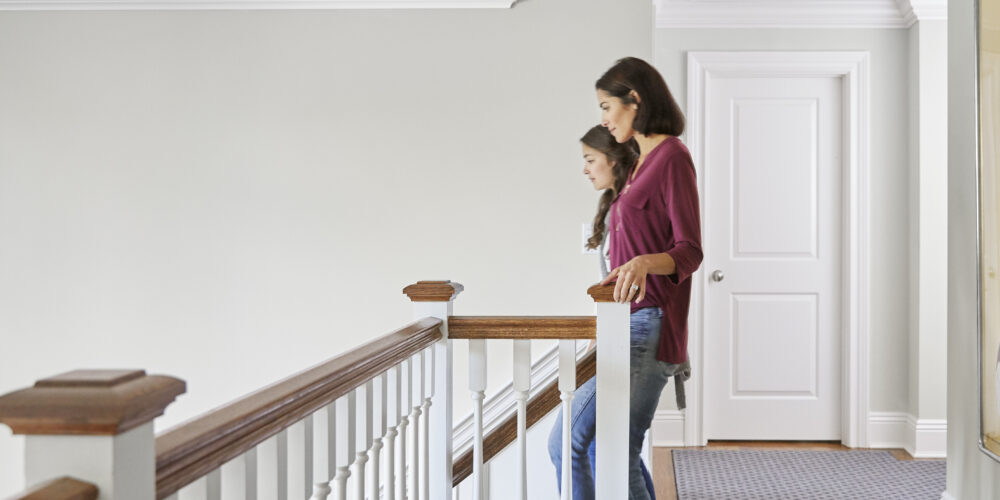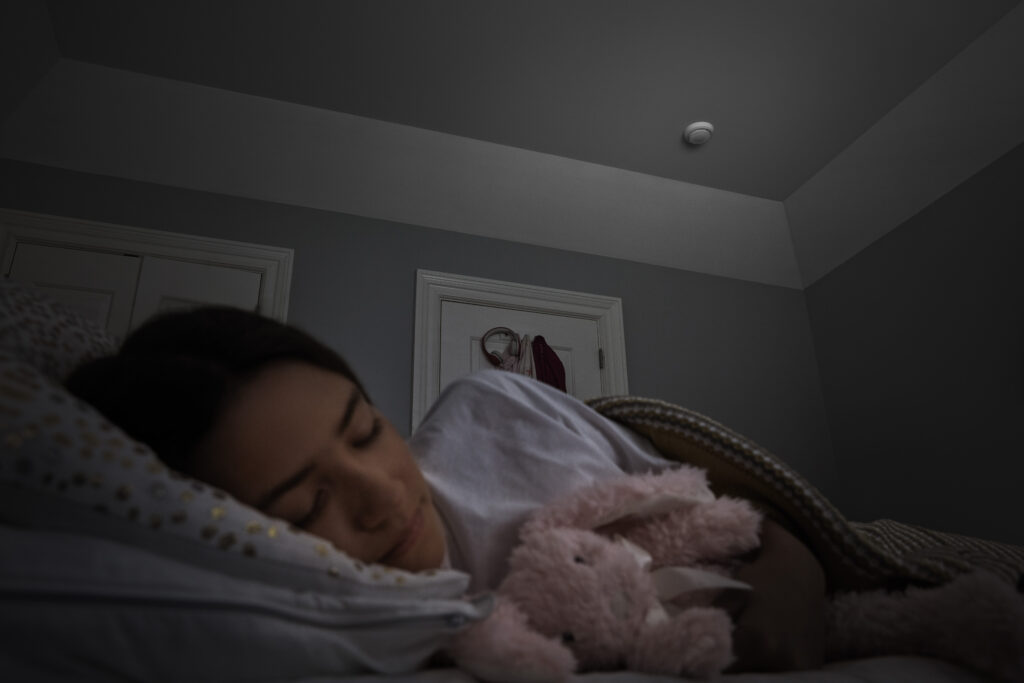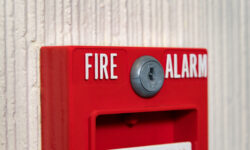New Smoke Alarms to Spur Safety and Sales
Nuisance alarms have numbing effects on people that could endanger them during an emergency, but impending certification should curtail this.

We’ve all heard the stories.
The all-too-common story of burnt food causing the infamous, burnt-food smell, the billowing smoke and the realization that you may need to order a take-out meal. And before you know it, the smoke alarm sounds with an unwanted alarm.
If your household is a repeat offender, you know exactly how fast and furious you need to wave the towel to avert the smell and smoke away from your main level smoke detector, thus avoiding the high-pitched, life-saving sound of a fire alarm.
This recently happened to me as well. My wife and I had dinner cooking in the oven, and it is my job to take it out. My wife kindly reminded me that last time I wasn’t careful and cooking juices spilled all over the inside of the oven, resulting in smoke filling the kitchen causing each smoke alarm in the house to sound the alarm.
Despite my attempts to be careful, I did it again and spilled liquid everywhere inside the oven, and smoke billowed out, setting off each of the smoke alarms. My dog ran for cover, my cat shot under a bed, and I began to run around waving a towel below the nearest alarm while opening doors and windows to let the smoke out.
Understandably, these types of events can create quite a panic in the home, and many of you likely have stories of your own.
The challenge that the industry faces is that if someone removes the smoke alarm’s batteries or the unit entirely because of nuisance alarms activating from cooking, it creates a huge risk for when other, life-threatening smoke situations occur.
Numbers Tell the Story
Unfortunately, situations like these arise quite often and are the number one reason why smoke alarms are activated, according to the National Fire Protection Association (NFPA).
Cooking nuisance alarms account for 73% of activations and lead to major issues where people remove batteries from their alarms and then forget to put them back in. The reality is that the smoke alarms are doing their job, detecting smoke and calling out that there is a problem to address. With cooking being the leading cause of home fires and home injuries, it’s important to keep this in mind.
This is especially true during the holidays and winter months with increased activity in the home, like holiday gatherings that can result in distractions, more cooking and eating being done inside, people may have window and doors closed more, and so on. In fact, the holiday season is the busiest time for fire departments because there are so many cooking fires that occur during this time.
According to an NFPA report, a fire department in the U.S. responds to a fire every 23 seconds, and worse, a house fire-related death occurs every two hours and 18 minutes. The report goes on to note that in 2021, local fire departments responded to an estimated 1.35 million fires in the country alone.
These fires caused wreckage to many families with an estimated 3,800 civilian deaths, 14,700 civilian injuries and more than $15.9 billion in direct property damage.

How Pros Can Prepare
The good news is that there is a new certification that will go into effect in July 2024 specifically developed to reduce nuisance alarms (i.e., from cooking). All manufacturers will be required to manufacture smoke alarms that meet this new standard (UL 217 8th Edition certification).
Once these new UL217 8th Edition models are available in the market, it opens up an opportunity for security dealers to meet with their customers to upgrade their smoke detectors throughout the whole home.
There are approximately a half-billion installed smoke alarms in the U.S., and these units can all be candidates for upgrade. And, for homes without professionally monitored systems, homeowners will be able to upgrade to alarms that comply with the 8th Edition certification.
This is a positive opportunity for the industry, but there are steps that you can take right now to be a trusted smoke and carbon monoxide (CO) advisor for your customers.
3 Safeguarding Steps
If you’re making a sales call or a service call in a customer’s home, consider including the following elements of your visit:
- Be the trusted advisor for your customers. If you are bidding on a security project, going the extra mile to show your customers that you care about their safety will differentiate your company.
- Point out the location of installed alarms. Explain whether they are appropriately placed in a manner that complies with codes and (NFPA) standards.
- Look for missing items. Look for missing smoke alarms where one would be expected and consider asking if any batteries were removed from smoke alarms. The NFPA recommends one CO alarm on every level and outside each sleeping area at home. For homes with a second story, an escape ladder is suggested to help provide an alternate exit from the home if the main door or stairway is blocked or not accessible. Fire extinguishers should be located in the kitchen, mechanical room and/or garage.
- Offer a comprehensive safety check. Consider carrying small kitchen fire extinguishers or fire spray on the truck to add when these items are missing in your customers’ home. Offer the items as a thank you to your customers for the opportunity to compete for their business, or to thank them for the customer relationship.
- Keep the kitchen safe. Look to see if your customer has a fire suppression unit such as a fire extinguisher or fire spray in the kitchen since almost half of home fires are from cooking.
- Test what they have. Ask if you can go through and test with the customer each of their smoke and CO alarms — it only takes a few minutes, and the brief noise and distraction is a small holdup to help prevent bigger, potentially dangerous issues down the line.
- Install the latest solutions. If your safety check uncovers the need for several new products, consider the following:
- Upgrade old equipment. Alarms older than 10 years should be replaced. If you notice missing or unresponsive items, offer to install a smoke alarm or CO detector, if needed. Fire extinguishers — including the pressure gauge — need to be checked regularly (one to six years, depending on the type of extinguisher).
- Suggest a combo alarm. Some customers prefer a combination (smoke and CO) alarm to minimize the number of devices on their ceiling, which makes the upgrade conversation from a smoke-only alarm to a combination alarm easier.
Protect Clients, Protect Business
On the upside, you and your team may already be thinking and operating in this way, helping out your communities one customer at a time.
Applying even some of these ideas to your customer routine will not only benefit the health and safety of your customers, but they will also help build a long-term relationship of trust. And trust is part of the foundation for any good business.
Pat Tessier is the senior director of product management at Resideo.
If you enjoyed this article and want to receive more valuable industry content like this, click here to sign up for our FREE digital newsletters!

Security Is Our Business, Too
For professionals who recommend, buy and install all types of electronic security equipment, a free subscription to Commercial Integrator + Security Sales & Integration is like having a consultant on call. You’ll find an ideal balance of technology and business coverage, with installation tips and techniques for products and updates on how to add to your bottom line.
A FREE subscription to the top resource for security and integration industry will prove to be invaluable.








Hi Pat, good article, however you left out one very important feature of all smoke and CO alarms, the silence or hush button. It’s typically the same button as the test button, but when the device is in alarm, you can press the silence button and it will stop the audible alarm for up to 10 minutes. If the condition still exists (smoke or CO present) when the alarm comes out of silence mode, the audible alarm will once again activate. The obvious advantage to the silence feature is that you don’t have to waive the towel at the alarm to silence it, but it also gives you time to determine the cause of the alarm without having to listen to it blare in your ear, or have the dog go crazy (as our does).